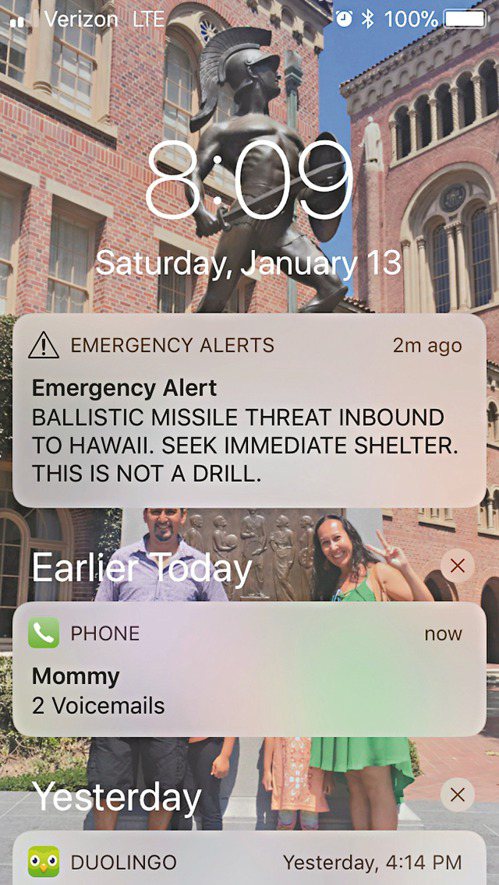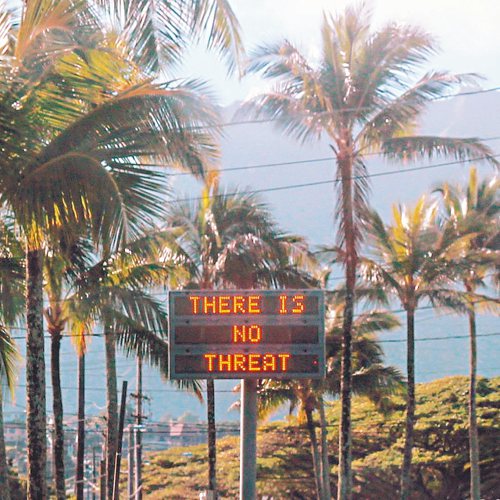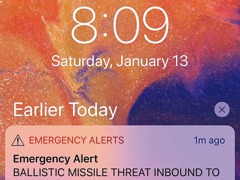AMSAT NEWS SERVICE
ANS-049
The AMSAT News Service bulletins are a free, weekly news and infor-
mation service of AMSAT North America, The Radio Amateur Satellite
Corporation. ANS publishes news related to Amateur Radio in Space
including reports on the activities of a worldwide group of Amateur
Radio operators who share an active interest in designing, building,
launching and communicating through analog and digital Amateur Radio
satellites.
The news feed on http://www.amsat.org publishes news of Amateur
Radio in Space as soon as our volunteers can post it.
Please send any amateur satellite news or reports to:
ans-editor at amsat.org.
In this edition:
* Upcoming AO-92 Operations Schedule
* SatPC32 12.8d is released
* ARRL 2018 Teacher Institute to Include Amateur Satellites, Telemetry
* Kettering University Student Brings Ham Radio Hobby, Expertise to
Campus
* AMSAT Argentina Balloon Flight Completes 2nd Trip Around the World
* AMSAT Phase 4 Ground Station Update: FPGA, RFNoC, SDSoC
* AA5UK Announces March 1 Cayman Island Satellite Activation
* Phase 4 Ground Weekly Report!
* Volunteer Opportunity – Openings for News Service Rotating Editor
* ARISS News
* Satellite Shorts From All Over
SB SAT @ AMSAT $ANS-049.01
ANS-049 AMSAT News Service Weekly Bulletins
AMSAT News Service Bulletin 049.01
From AMSAT HQ KENSINGTON, MD.
February 18, 2018
To All RADIO AMATEURS
BID: $ANS-049.01
Upcoming AO-92 Operations Schedule
AO-92 operations are scheduled among the U/v FM repeater, L-Band
Downshifter, Virginia Tech Camera, and the University of Iowa’s High
Energy Radiation CubeSat Instrument (HERCI).
For the week of 18 – 24 Feb 2018, the following mode changes are
scheduled:
Approximately 0200UTC 18Feb we will enable the L band uplink for ~24
hours
Approximately 0255UTC 20Feb we will enable high speed data in order
to download from the HERCI experiment for 40 minutes
Approximately 1540UTC 21Feb we will enable high speed data in order
to download from the VT camera for 40 minutes
Approximately 0215UTC 22Feb we will enable high speed data in order
to download from the HERCI experiment for 40 minutes
All other times the U/v repeater will be open continuously.
[ANS thanks Drew KO4MA for the above information]
———————————————————————
SatPC32 12.8d is released
The English version of SatPC32 12.8d is now available for download on
the author’s web page.
http://www.dk1tb.de/downloadeng.htm
Here’s What’s New in the 12.8d version:
1. The CAT commands of the IC-9100 have been extended again. The
program now also controls the DV mode (DV for ‘Digital Voice’) of the
radio. The operating mode must be entered as DV in the file
Doppler.SQF. With the FT-817 the program now additionally supports
the CWR mode.
2. All SatPC32 programs now process significantly larger Keplerian
element source files. Especially because of the numerous new
Cubesats, the number of data sets contained in the source files has
increased significantly. For example the file Cubesat.txt currently
contains data for nearly 400 satellites. The previous version of the
SatPC32 programs could only read up to 320 data sets (only SatPC32
itself up to 500). All SatPC32 programs have been expanded to handle
sets of up to 1500 satellites.
3. In all programs (SatPC32, SatPC32ISS, Wisat32, WinAOS and
WinListen), the list of satellites contained in the source file
(‘Available’ list in menu Satellites) is now displayed in
alphabetical order to facilitate locating individual satellites.
4. The program SatPC32ISS now also allows the creation of up to 12
satellite groups. The new Cubesats have also increased the number of
‘in-band’ satellites. Originally, in-band operation in amateur radio
was only available at the ISS.
5. In order to accelerate a change between the individual satellite
groups, the ‘Groups’ window can now be called up by clicking on
vacant areas of the main window, except in the Satellite menu. Such
free positions are located on the right and left of the frequency
window. Editing the groups (create or delete a group, add or remove
satellites) can only be done in the Satellites menu.
6. In the Satellites menu the data sets of the satellites contained
in the active source file can now be displayed. When called, the data
set of the currently selected satellite is displayed. The feature
helps you to immediately know the identifier of the satellite. This
allows you to add an entry to the file ‘AmsatNames.txt’ (menu ‘?’
‘Auxiliary files’), so that the satellite can be displayed in the
entire program with its AMSAT name or with a user defined name.
7. The program has improved control of the sub-audible tone required
by some satellites. For many years SO-50 was the only such satellite.
Switching sub tone was no issue. Now we have several (AO-85, AO-91,
AO-92) The program can now automatically switch the sub tone on/off
when switching between PL tone satellites and others, changing
between u/v and v/u satellites, changing the group, closing the
program etc.
8. In addition, numerous minor changes and error corrections have
been made some people have complained about the difficulty of
manually adding a new satellite and its corresponding tuning
information. The Programs menu can now launch the W9KE
DopplerSqfEditor to aid this process.
Please read the instructions before installing or updating the
program. You probably want to run the DataBackup program before
updating an existing version. Existing registration codes work with
the new version.
Thanks to Erich Eichmann DK1TB for donating this software to AMSAT.
Sale of registration codes and CDs is a major fund raiser for AMSAT.
And thanks to Erich for providing user support on amsat-bb and
updating the program for 20 years. No other satellite tracking
program provides such comprehensive radio Doppler tuning.
[ANS thanks Wayne W9AE for the above information]
———————————————————————
ARRL 2018 Teacher Institute to Include Amateur Satellites, Telemetry
As part of its educational outreach through the Education &
Technology Program (ETP), ARRL will offer three sessions of the
Teachers Institute on Wireless Technology this July. The week-long
workshops will be held at ARRL Headquarters in Newington,
Connecticut, and in Dayton, Ohio — hosted by the Dayton Amateur Radio
Association (DARA). The Teachers Institute (TI) is an expenses-paid,
professional development seminar that provides teachers at all grade
levels with tools and strategies to introduce basic electronics,
radio science, space technology, and satellite communication, as well
as weather science, introduction to micro-controllers, and basic
robotics in their classrooms.
The Teachers Institute curriculum is designed for motivated teachers
and other school staff who want to learn more about wireless
technology and bring that knowledge to their students. The goal of
the TI program is to equip educators with necessary foundational
knowledge and — through hands-on learning — generate the inspiration
for teachers to continue exploring wireless technology and adapt what
they learn to their classroom curricula.
Interested educators can apply online. The $100 enrollment fee is
refunded for applicants who are not selected. A qualified applicant
must be an active teacher at an elementary, middle, high school, or
community college/university, or in a leadership or enrichment
instruction role in an after-school program.
Session Location Dates Instructor
TI – 2 Newington, CT July 9 – July 12 Matt Severin N8MS
TI – 1 Dayton, OH July 16 – July 20 Larry Kendall K6NDL
TI – 1 Newington, CT July 23 – July 27 Tommy Gober N5DUX
Topics covered in the TI-1 “Introduction to Wireless Technology”
workshop include basic electronics, radio science, microcontroller
programming, and basic robotics. Among other activities, participants
will learn how to solder and practice by building a small project.
They’ll also learn basic circuit concepts and learn how to use basic
test equipment. In addition, TI-1 attendees will learn about Amateur
Radio, take part in a hidden transmitter hunt, see demonstrations of
Amateur Radio satellite communication, and build and program their
own simple robots.
The TI-2 “Remote Sensing and Data Gathering” workshop will
concentrate on analog-to-digital conversion and data sampling.
Participants will receive telemetry from Amateur Radio satellites and
apply it to math and science topics. TI-2 participants will also
construct a marine research buoy equipped with environmental sensors,
build a microcontroller to sample the data, configure it for
Automatic Packet Reporting System (APRS) transmission, and receive
and upload data to a spreadsheet for analysis.
Holding an Amateur Radio license is not required for the
“Introduction to Wireless Technology” workshop (TI-1), but one is
required by those planning to attend the advanced “Remote Sensing and
Data Gathering” workshop (TI-2), and applicants to the advanced
workshop must have completed TI-1.
The grant to attend a TI covers transportation, hotel, and a modest
per diem allowance to cover meals, instructional resources, and a
resource library of relevant ARRL publications.
Graduate credit is available through Fresno Pacific University,
which may be applied to satisfy professional growth requirements to
maintain teaching credentials. The class is self-contained, and
participants are expected to be able to complete all requirements
during the class time. Graduate credit forms may be requested at the
end of the Teachers Institute.
For more information, contact Ally Riedel ariedel at arrl.org at
ARRL Headquarters.
[ANS thanks ARRL Headquarters for the above information.]
———————————————————————
Kettering University Student Brings Ham Radio Hobby, Expertise to
Campus
Ruth Willet ‘21 has always been fascinated with Morse code,
especially when researching World War II. That fascination grew into
a hobby, and she soon found herself engrained in the amateur radio –
more commonly known as ham radio – community.
Willet, who is double majoring in Mechanical Engineering and
Engineering Physics, first got licensed in June 2015 as a ham radio
operator because of her interest in Morse code. She soon upgraded her
license in order to explore more aspects of the hobby.
Other hams know Willet as KM4LAO (Kilo Mike Four Lima Alpha Oscar),
the call letters of her government-issued ham radio license.
“It’s such a special hobby because there’s so many people that want
to get to know you and want to help you learn and grow. It really has
enabled me to mature into who I am today. I have gained incredible
friends from across the globe,” said Willet, a Georgia native. “This
hobby supplements very well what I’m doing at Kettering because it
has application in a lot of different subjects. I love seeing the
practical application of electronics, solar weather and the way radio
signals propagate around the globe. I am thrilled by the fact that I
can talk to someone who’s driving down the interstate 10 miles away,
bounce signals off of satellites to have conversations hundreds of
miles away, or talk around the world to someone in Africa. It’s
fascinating. You really learn a lot.”
Willet had to pass an exam given by the Federal Communications
Commission (FCC) in order to receive her call sign and be allowed to
operate on the air. The three levels of Amateur radio licenses from
entry-level to most advanced are Technician, General, and Amateur
Extra. Willet upgraded to the Amateur Extra level license before she
graduated from high school.
Willet can use a hand-held radio to talk with someone across town,
or she can use a more robust radio that enables her to talk around
the world by reflecting her transmitted signal off the ionosphere.
There are fast-paced competitive events she participates in where she
is supposed to talk to as many people as possible within 24 hours.
She can operate in multiple ways, including Morse code, voice
communication or digital (which is similar to texting through ham
radio).
“The fun thing is that’s only the start. Amateur radio satellites
are orbiting the earth. You can bounce off the satellites and talk to
people halfway around the world,” Willet said. “We can also use our
skills to assist in emergency situations. For example, when Hurricane
Irma recently hit in Puerto Rico, amateur radio operators were some
of the only people who could communicate from the island to the
outside world.”
In 2016, Willet also participated in National Parks on the Air, a
worldwide event organized by the American Radio Relay League. Since
2016 was the centennial of the National Park Service (NPS), hams
wanted to help celebrate history by getting people to national parks,
seashores, monuments, and more. Ham radio operators went out and set
up portable radio stations, got on the air, and helped other hams
around the world conduct “virtual visits” to parks across the country.
When Willet came to Kettering University, she knew she wanted to
continue her ham radio activities. Kettering was appealing to her for
the small classes and the close-knit campus feel, on top of the co-op
experience.
“After coming for the LITE (Lives Improved Through Engineering)
summer program and seeing how personal everybody was at Kettering I
just really felt like it was a great fit. And I can’t turn down the
co-op experience,” Willet said. “I was first interested in Mechanical
Engineering because my grandfather had a book about basic machines
and how they work. I was fascinated with levers to complicated gears.
Then senior year of high school I took Physics and I loved it. Being
able to see the effects of basic physics on daily life was very
interesting to me. I’m learning as much as I can at school and
exploring opportunities both inside and outside the classroom so that
I can make the most of my time here.”
She has found that the skills she learns in classes go hand in hand
with her amateur radio hobby. Willet plans to start up an Amateur
Radio Club on campus in the spring 2018 term to get more students
interested.
“It’s a stress relief for me. I really enjoy sharing this hobby with
other students,” she said. “I would encourage people to consider
exploring amateur radio because it’s a hobby that allows you to
explore anything from technical electronics to international
friendships. Amateur radio is open to anyone. It will help develop
your professional and personal skills, participate in and learn from
fascinating activities, and connect with an incredible community.”
[ANS thanks Sarah Schuch and Kettering University for the above
information]
———————————————————————
AMSAT Argentina Balloon Flight Completes 2nd Trip Around the World
AMSAT Argentina reports that their earth circling El PicoGlobo
WSPR beacon balloon has now completed its 2nd lap around the
world.
After its 2nd crossing of the Pacific Ocean the balloon flew
over Patagonia, then headed north at 12,000 meters altitude to
Buenos Aires during the night of February 11. On February 12
it flew over Uruguay then turned east out over the Atlantic
Ocean to begin its 3rd circle of the Earth.
PicoGlobo transmits a WSPR beacon on 14.0956 MHz.
Flight progress can be followed at:
http://lu7aa.org.ar/wspr.asp
https://aprs.fi/#!call=a%2FLU1ESY-3&timerange=604800&tail=604800
[ANS thanks AMSAT Argentina for the above information]
———————————————————————
AMSAT Phase 4 Ground Station Update: FPGA, RFNoC, SDSoC
Michelle, W5NYV says the latest Phase 4 Ground Station Report
is available for viewing at: https://youtu.be/moKFVagY_Ro
This week you’ll see a video demo of the Voltera V-one system
available for circuit printing, solder paste and reflow to
enable prototype development.
Work has been progressing on the FPGA or field programmable
gate array which is at the heart of many modern software defined
radios. Having powerful reconfigurable digital logic realizes a
lot of the promise of SDRs. Balancing the workload between the
general purpose processor and the FPGA is a big challenge.
The RFNoC, or Radio Frequency Network on a Chip from Ettus Research
for the 300 series USRPs before. RFNoC lets you place blocks that
run on the FPGA in GNU Radio as if they were being run by the host
computer. This lets you use the FPGA to full advantage within GNU
Radio Companion.
A comparison is made with the SDSoC, the Software Defined System
on a Chip ,a tool from Xilinx.
The team is looking for your help! If you can help ease the process
of learning this environment, please let Michelle know:
W5nyv@amsat.org
[ANS thanks Michelle, W5NYV and the AMSAT Phase 4 Ground Station
team for the above information]
———————————————————————
AA5UK Announces March 1 Cayman Island Satellite Activation
ZF2, CAYMAN ISLAND (Satellites, Grids, HF). Adrian, AA5UK, will once
again be operating as ZF2AE from Grand Cayman (between March 1-4th)
and ZF2AE/ZF8 from Little Cayman (between March 5-10).
Activity will be holiday style (usually) on 40-10 meters using a IC-
7300 and vertical antenna.
Operations will be focused on the Digital modes (FT8, RTTY,
PSK and other digital modes upon request)with possibly some SSB, and
the satellites using 2x FT-817s and Arrow Antenna for satellite. Most
of his activity will be in the afternoons and evenings. For the
latest operational updates, watch his Twitter links <@AA5UK and @ ZF2AE>. QSL direct to AA5UK with a SAE/SASE, LoTW or eQSL.
[ANS thanks Ohio/Penn DX Bulletin #1351 for the above information]
———————————————————————
Phase 4 Ground Weekly Report!
Voltera Circuit printer for prototyping is up and running the Hello
World circuit.
Video of this report at https://youtu.be/rdjKZCc9g74
There will be plenty more reports and feedback about the badge
design over coming week as the JoCo Cruise embarks. Several of our
team members are on the cruise and we can’t wait to hear all about
it. Everything that we’ve learned on this effort will be applied to
the Hamvention badge, and to the Phase 4 Ground radios.
We have some Software Defined System on a Chip progress. We have
received our Xilinx specific JTAG Cable. Here it is!
Charles Brain has been battling Petalinux and linux builds for his
environment. Plenty of learning going on there. Some of us have
received additional hardware from LimeSDR and there is more on the
way.
We have received very positive news from from Critical, the makers
of Snickerdoodle, that official board definition files are in
progress and will be available very soon. This means that those of us
that are ordinary tool users, and not necessarily advanced tool
makers, will be able to experiment and make progress with the
Snickerdoodle, Xilinx Vivado, and the Xilinx SDK, more easily.
SDSoC allows you to take functions written in C and C++, evaluate
whether they would be better run on either the general purpose
processor or the FPGA, and then assign them to the proper hardware.
The 5GHz RF team is learning a lot about the impact of connectors on
performance, and are evaluating some higher quality solutions.
Several sets of team members are working on transverter designs.
This is a very active and interesting area of investigation. There’s
a large number of tradeoffs and design patterns involved. We have a
10GHz specific effort, a high-performance multi band effort, the 5GHz
RF team previously featured, and more. If you are interested in RF
designs, then we are here to help.
Ed Friesma at UNLV is taking on more of the correlator design. Our
next report will be all about the progress on the DVB-S2 correlator,
the GNU Radio block, what we can leverage from the GPU
implementation, and next steps.
On the 28th of February, we will have two guest speakers at our
regular ASCENT conference call. Nate and Neal from Ettus Research
will be addressing questions about the Careful COTS design of a USRP
300 series board for use in space. Having a powerful SDR at the heart
of an amateur radio payload would put us in excellent position to
deploy any modulation scheme we want. The Careful COTS version of a
USRP is why Phase 4 Space was founded, and we’ve had a very good week
in terms of outreach and evangelism.
There’s good news in an update to the Phase 4B mission on the Wide
Field Of View satellite, with a launch scheduled for 2020. You can
read about it in the article linked in the notes, from this past June.
Our job on Phase 4 Ground is to make sure that you have a radio that
can use this or any other payload that uses the Five and Dime air
interface. And of course we want to fill up terrestrial microwave
with the same fun and easy to use broadband digital microwave
signals. If you’re interested in learning more, then get in touch.
http://www.losangeles.af.mil/…/final-rfp-released-for-laun…/
Plenty going on and lots of fun to be had. We will have a booth at
Dayton as soon as possible, and we will be asking for time to talk at
the Hamvention SDR forum about the Careful COTS effort, open source
successes, and the impact of SDR advances on licensed and unlicensed
services.
After Hamvention is DEFCON. And we might have something up our
sleeves this year.
I’m working very hard on setting up a workshop and hackfest at GNU
Radio Conference 2018, which will be held September 17-21 in
Henderson, Nevada. This hackfest will focus on developing GNU Radio
receiver blocks for DVB-S2 and S2X. If you are on the team or a
supporter or find yourself interested in all of this, then please
consider coming to the conference and participating in this effort.
Tickets will be available very soon. It’s a volunteer run event made
possible by people just like you.
And, there’s an open space initiative from Lockheed Martin that we
need to take a serious look at, and some new products on the market
that might make our GSE and DVB-S2X manufactured solutions a bit
easier. Howie DeFelice is on that trail and will report back. See you
next week!
[ANS thanks Michelle W5NYV for the above information]
———————————————————————
Volunteer Opportunity – Openings for News Service Rotating Editor
If you’re open to volunteering to help AMSAT this is your chance!
We have openings for a few volunteers willing to help as an AMSAT
News Service editor.
Our editors work on a rotating schedule with each taking turns as
the current week’s news editor. Using input received from members,
the amateur radio community, officers, plus our other editors your
job is to assemble the AMSAT News Service bulletin for your week.
(Template is provided to help you format the message.)
If you can help contact our Senior News Service Editor, Lee McLamb,
KT4TZ via his e-mail: kt4tz at amsat.org
(Ed. note: the need for at least one, hopefully many volunteer
editors, is immediate. K9JKM will be retiring at the end of March
with extensive travel plans, often out of reach of the internet.)
[ANS thanks the AMSAT News Service for the above information]
———————————————————————
ARISS News
+ A Successful contact was made between Naka Junior High School,
Kakamigahara City, Japan and Astronaut Mark Vande Hei KG5GNP using
Callsign NA1SS. The contact began 2018-01-22 10:23 UTC and lasted
about nine and a half minutes. Contact was Direct via 8J25D.
ARISS Mentor was Satoshi 7M3TJZ.
+ A Successful contact was made between The English School, Nicosia,
Cyprus and Astronaut Mark Vande Hei KG5GNP using Callsign NA1SS. The
contact began 2018-01-24 10:35 UTC and lasted about nine and a half
minutes. Contact was Telebridge via W6SRJ.
ARISS Mentor was Armand SP3QFE.
+ A Successful contact was made between Central Magnet Math &
Science ES/Batesville School District, Batesville, AR and Astronaut
Joe Acaba KE5DAR using Callsign OR4ISS. The contact began 2018-01-31
16:42 UTC and lasted about nine and a half minutes. Contact was
Telebridged via IK1SLD.
ARISS Mentors was Keith W5IU.
+ A Successful contact was made between Moore Square AIG/GT Magnet
School, Raleigh, NC and Astronaut Scott Tingle KG5NZA using Callsign
NA1SS. The contact began 2018-02-05 18:32 UTC and lasted about nine
and a half minutes. Contact was Direct via KG4AKV
ARISS Mentors were Steve W1HQL and Ryan W4NTR.
+ A Successful contact was made between Vilniaus Jono Basanaviciaus
Gymnasium together with Vilniaus Jono Basanaviciaus Progymnasium,
Vilnius, Lithuania and Astronaut Joe Acaba KE5DAR using Callsign
OR4ISS. The contact began 2018-02-14 12:37 UTC and lasted about nine
and a half minutes. Contact was Direct via LY1BWB
ARISS Mentor was Eskil SM5SRR.
+ A Successful contact was made between Los Angeles Academy Middle
School, Los Angeles, CA and Astronaut Joe Acaba KE5DAR using
Callsign NA1SS. The contact began 2018-02-15 17:45 UTC and lasted
about nine and a half minutes. Contact was Direct via W6RVD
ARISS Mentor was Charlie AJ9N.
Upcoming ARISS Contact Schedule
“Galaxy – Children and Youth Center for Space Education”, Kaluga,
Russia, direct via TBD
The ISS callsign is presently scheduled to be RSØISS
The scheduled astronaut is Alexander Misurkin
Contact is a go for 2018-02-18 10:45 UTC
Agrupamento de Escolas do Fundão, Fundão, Portugal, direct via CS5DBB
The ISS callsign is presently scheduled to be OR4ISS
The scheduled astronaut is Scott Tingle KG5NZA
Contact is a go for: Wed 2018-02-21 09:38:11 UTC 33 deg
Museum of Science & Technology – Danforth Middle School, Syracuse,
NY, direct via K2MST
The ISS callsign is presently scheduled to be NA1SS
The scheduled astronaut is Mark Vande Hei KG5GNP
Contact is a go for: Fri 2018-02-23 14:08:52 UTC 28 deg
School in Kursk, Russia, direct via TBD
The ISS callsign is presently scheduled to be RSØISS
The scheduled astronaut is TBD
Contact is a go for Sat 2018-02-24 08:45 UTC
Watch for possible time update
[ANS thanks ARISS, Charlie AJ9N and David AA4KN for the above
information]
———————————————————————
Satellite Shorts From All Over
+ European FOSDEM Talks Playlist
The Free and Open source Software Developers’ European Meeting
(FOSDEM) is a two-day event organized by volunteers to promote
the widespread use of Free and Open Source software. A playlist
of the talks is posted at:
https://tinyurl.com/ANS49-FOSDEM
[ANS thanks FOSDEM for the above information]
+ Congratulations to Mikey White, K7ULS for completing his Worked
All States – Satellite on February 13. Mikey says state #50 was
Rhode Island. Bob Mattaliano, N6RFM provided the connection at
the Rhode Island end. Mikey posted a video at:
[ANS thanks Mike K7ULS via AMSAT North America Facebook]
+ Photos needed for 2018 edition of AMSAT Getting Started With
Amateur Satellites.
Steve Belter, N9IP, recently tweeted that the editors of the 2018
edition of “AMSAT Getting Started With Amateur Satellites” are
looking for action photos of people in the act of operating the
satellites. Submissions with credits should be emailed to Steve
n9ip at amsat dot org.
[ANS thanks Steve N9IP for the above information]
+ The AMSAT Office will be closed on Monday, February 19th in
observance of Presidents’ Day.
[ANS thanks Martha for the above information.]
+ On February 16 Jeff, WB8RJY worked Jose, EB1AO in Spain via AO91.
The satellite was at 0.8 degrees for Jose and at 0.6 degrees for
Jeff for this QSO. Jeff commented, “Thats stretching the old
string pretty tight! Once again, amazing bird!” (via Twitter)
[ANS thanks Jeff WB8RJY for the above information.]
———————————————————————
/EX
In addition to regular membership, AMSAT offers membership in the
President’s Club. Members of the President’s Club, as sustaining
donors to AMSAT Project Funds, will be eligible to receive addi-
tional benefits. Application forms are available from the AMSAT
Office.
Primary and secondary school students are eligible for membership
at one-half the standard yearly rate. Post-secondary school students
enrolled in at least half time status shall be eligible for the stu-
dent rate for a maximum of 6 post-secondary years in this status.
Contact Martha at the AMSAT Office for additional student membership
information.
73,
This week’s ANS Editor,
EMike McCardel, AA8EM
aa8em at amsat dot org
_______________________________________________
Via the ANS mailing list courtesy of AMSAT-NA
http://www.amsat.org/mailman/listinfo/ans
附件區域
預覽 YouTube 影片「20180210 Phase4 weekly report」





